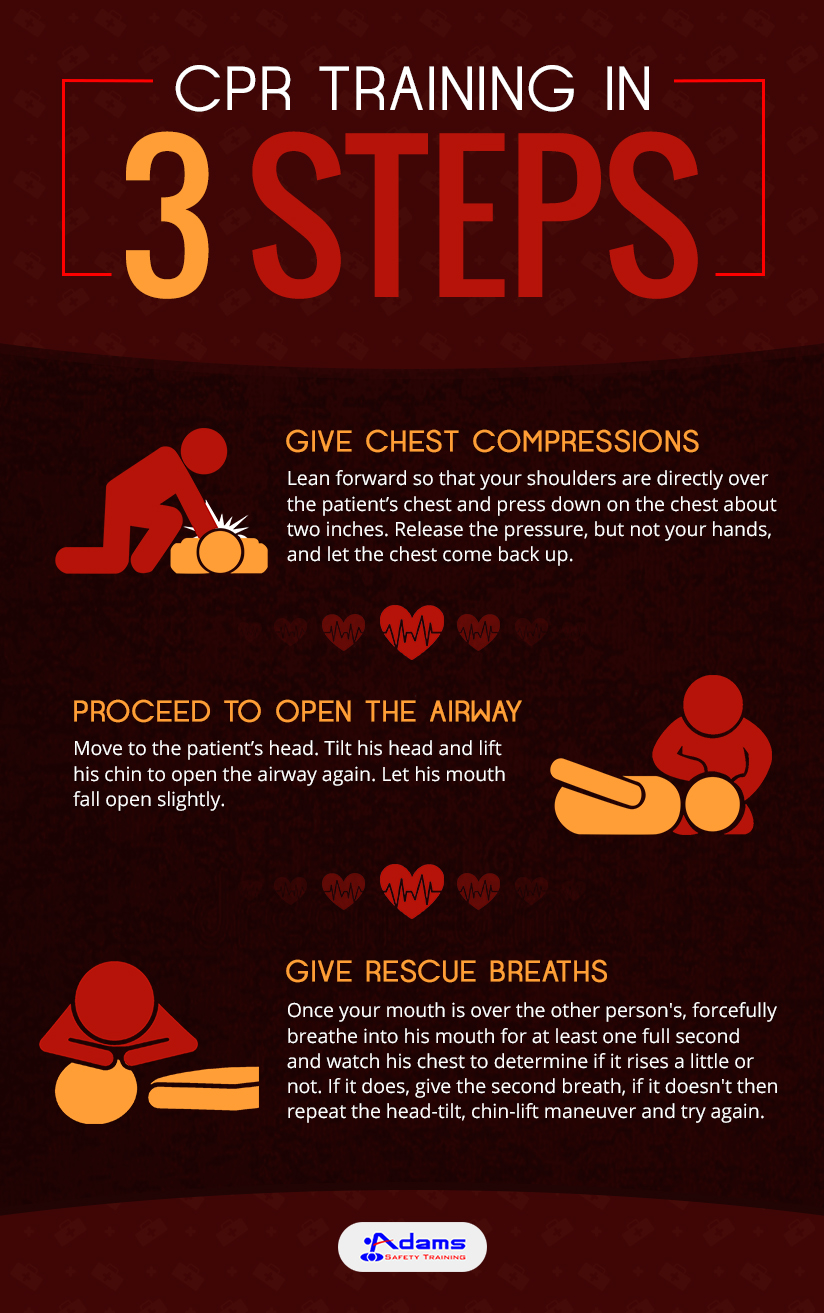This infographic titled ‘CPR Training in 3 Steps’ explains just how CPR is properly administered. Cardiopulmonary resuscitation, more popularly known as CPR, is an emergency procedure that involves a combination of synchronized chest compressions with rescue breaths to keep the brain functioning manually and keep the blood pumping around the body.
Who can benefit from CPR
Those who have been rescued from drowning, or who are going into cardiac arrest or experiencing a heart attack, need CPR for surviving until the medical help reaches them.
How does the procedure work?
- Give chest compressions: Lean to have your shoulders directly over the patient’s chest. Now press down for about 2 inches before releasing. Do not remove your hands even after you release. Let the chest come back up and then repeat the procedure.
- Proceed to open the airway: Tilt the patient’s head and then lift his chin. This should open the airway again after you allow his mouth to open a bit.
- Give rescue breaths: Forcefully breath inside the patient’s mouth for at least a full second and see if his chest rises or not. If it does not, give another breath, if still not, tilt the head and chin, and then try the breath again.
How can CPR training help you?
- Save lives: With proper CPR training, you will be there to save lives and give people close to them a sigh of relief.
- Turn professional: Your knowledge can also get you a job in a hospital or other medical facility, as well as in many other sectors.
- Feel proud of yourself: You certainly will have a reason to feel proud of yourself, for you will have the knowledge to become the people’s protector and earn their respect and love in return.
For more information, please refer the attached infographic.


